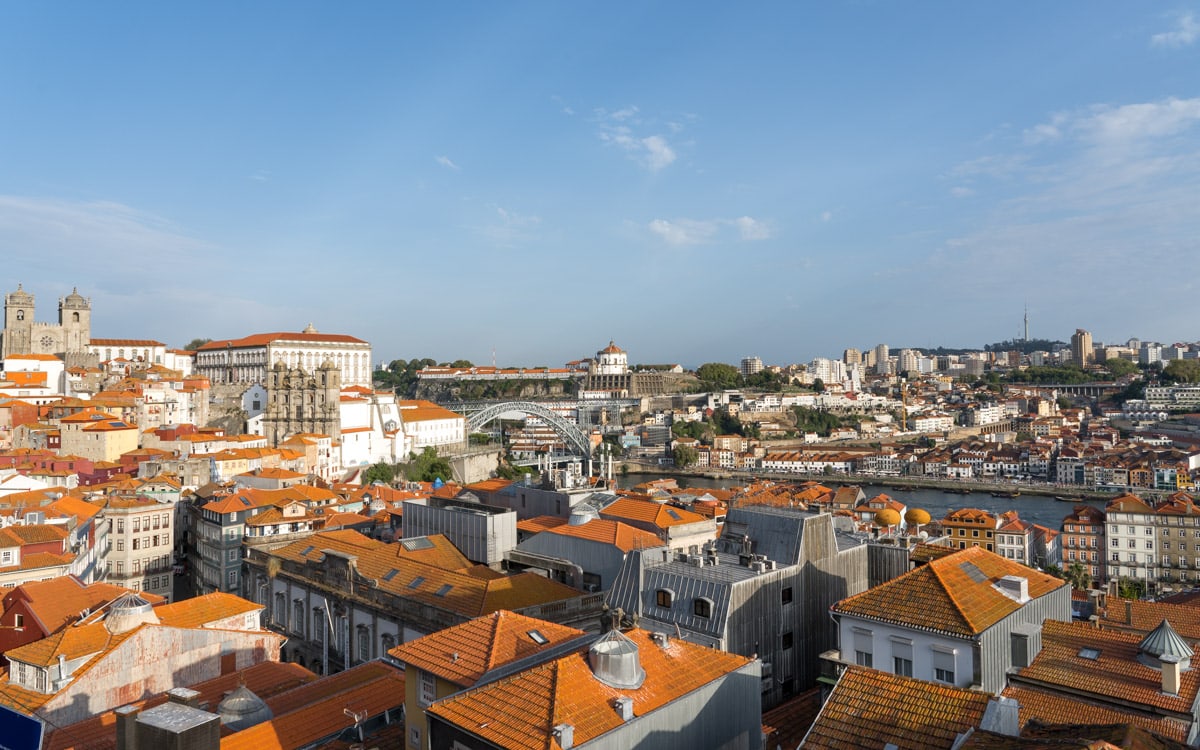
Portugal is a small country with a rich history that dates back over 1,000 years. Throughout its history, Portugal has been colonized by multiple civilizations, leaving a profound mark on the country. Scatted across the country are hundreds of important historical sights dating back to pre-historic times. Many of these sights have been declared national monuments of Portugal for their historical significance.
In 2006, with the help of the Ministry of Culture, the people of Portugal decided to come up with a list of the finest national monuments and cultural highlights in Portugal. The list would be known as the Seven Wonders of Portugal (Sete Maravilhas de Portugal).
Initially, there were 793 sights on the list of national monuments of Portugal. Through the process of elimination, the list was reduced to 77 and finally 21. To select the final wonders, a six month public election was held. On July 7, 2007, the results of the seven wonders of Portugal were released to the public.
If you are looking for more information about Porto and Portugal, I highly recommend picking up a guidebook such as Rick Steves Portugal.These are the the seven wonders of Portugal:
Table of Contents
1 – Pena Palace (Palácio da Pena)
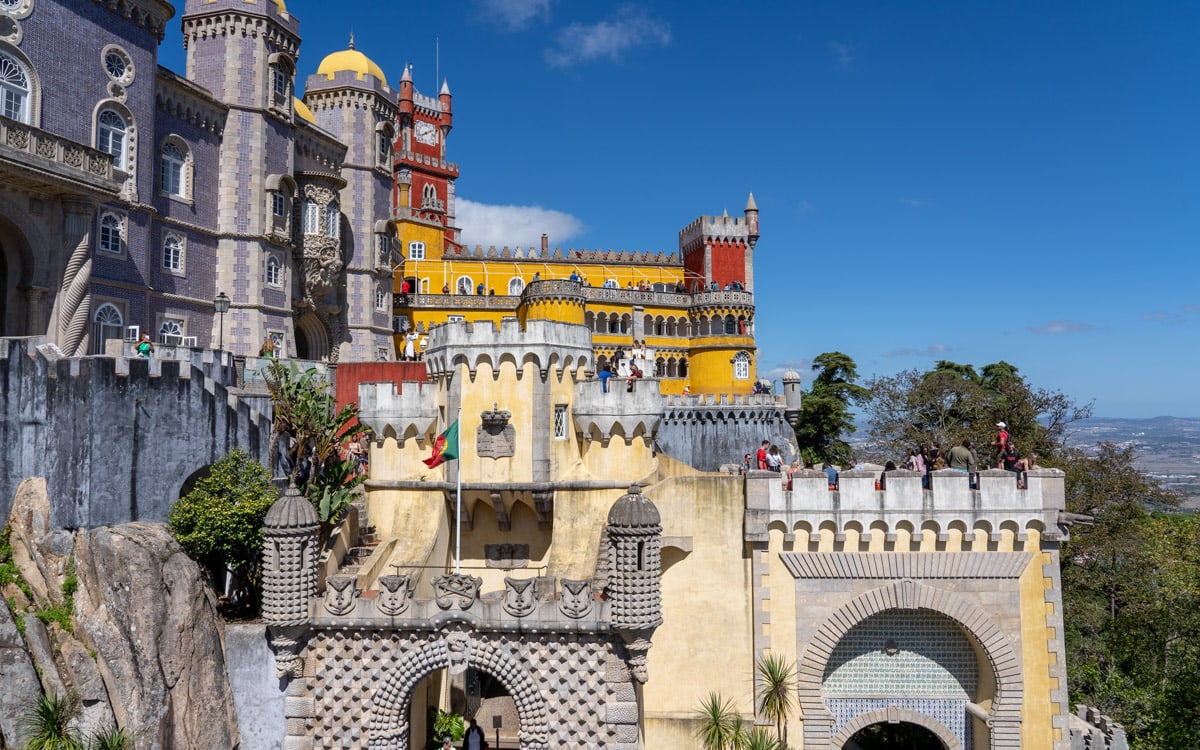
Located in the hills above Sintra is Pena Palace (Palácio da Pena), a colorful Romanticist castle. During the Middle Ages, a small chapel dedicated to Our Lady of Pena was built at this location. At the end of the 15th century, King Manuel I ordered the construction of a monastery. During the 1755 Lisbon earthquake, the monastery was reduced to ruins. In the middle of the 19th century, King Ferdinand II transformed the ruins into a palace and summer residence for the royal family. The exotic castle, a fine example of 19th-century Romanticism, combined Medieval and Islamic elements into its design. After the Republican Revolution of 1910, the palace turned into a museum. Today, Pena Palace is one of the most visited museums in Portugal. It also is an UNESCO World Heritage Site and national monument. Surrounding the palace is an expansive park. In the park are exotic plants and trees brought in from around the world including Japan, New Zealand, and United States.
Pena Palace (Palácio da Pena)
Address: Estrada da Pena, 2710-609 Sintra, Portugal
Hours: The palace is open daily 9:00AM-6:00PM; The garden is open daily from 9:00AM-6:30PM; Last entry for both the palace and garden is 5:30PM.
2 – Belém Tower (Torre de Belém)
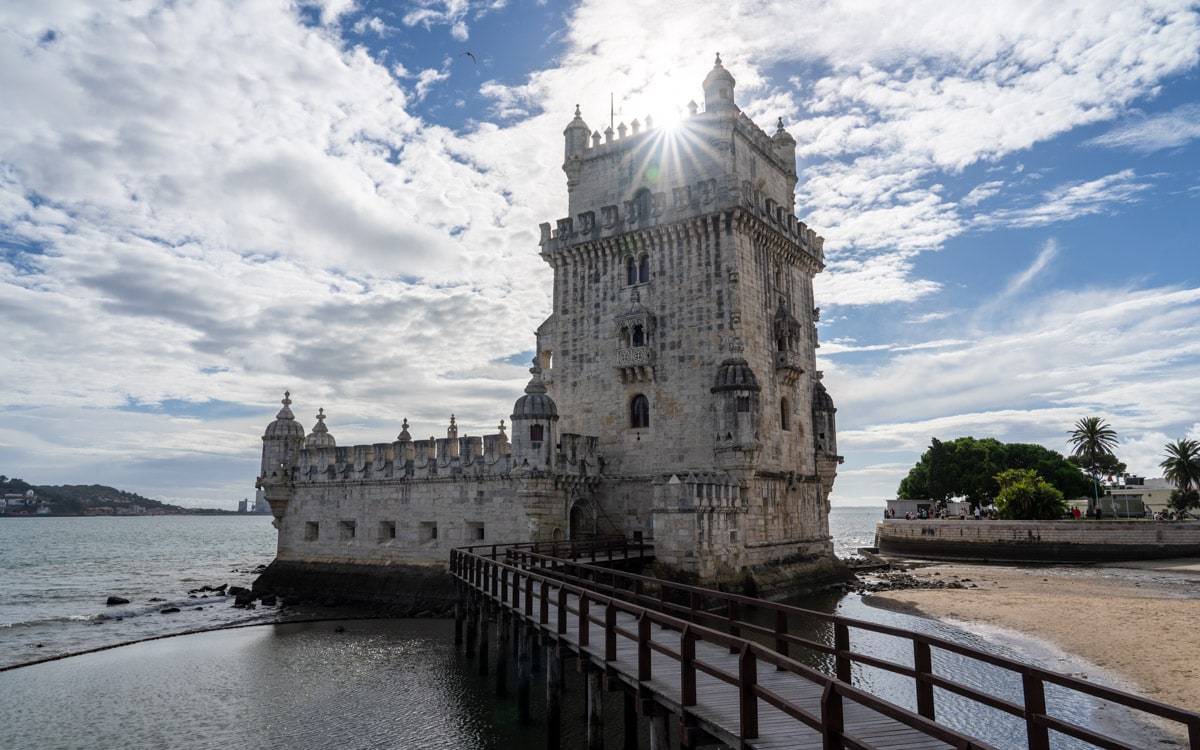
No visit to Lisbon is complete without a trip to the Belém district, located about 8 kilometers (5 miles) west of central Lisbon. And, no visit to Belém is complete without stopping at the Belém Tower (Torre de Belém), officially the Tower of Saint Vincent (Torre de São Vicente). Construction began on the tower, located on a small island in the Tagus River, in 1514 and ended in 1519. During the Age of Discovery, sailors would pass by the tower on their journeys around the world. And, the tower would be the first thing they would see on their return to the homeland. Today, the 30 meter (98 foot) limestone tower and bastion is one of the finest examples of Portuguese Late Gothic Manueline style. Visitors to the tower can climb to the top where they will be rewarded with views of the 25th of April Bridge, the Tagus River, and Christ the King statue. Located nearby in the Belém district is Jerónimos Monastery (Mosteiro dos Jerónimos).
Belém Tower (Torre de Belém)
Address: Av. Brasília, 1400-038 Lisboa, Portugal
Hours: April-September: 10:00AM-6:30PM; October-March: 10:00AM-5:30PM; Closed on Mondays, January 1st, Easter Sunday, May 1st, June 13th, December 24th-25th. The exterior of the tower is accessible 24 hours a day.
3 – Jerónimos Monastery (Mosteiro dos Jerónimos)
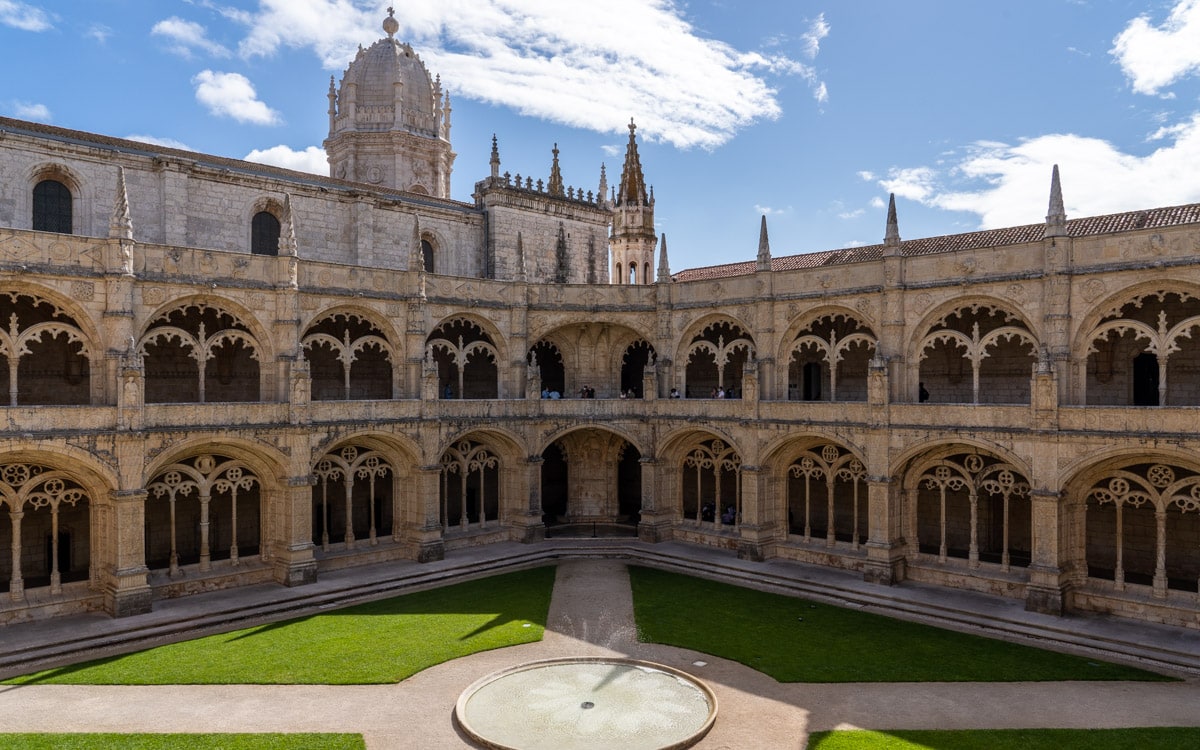
Located steps away from Belém Tower is Jerónimos Monastery (Mosteiro dos Jerónimos). The massive monastery and church stretches for 275 meters (902 feet) along Belém’s waterfront. Its limestone exterior is a fine example of Portuguese Late Gothic Manueline style architecture. Construction on the monastery began in 1501 by the orders of King Manuel I. With financing from taxes placed on spices brought back to Portugal, work was completed 100 years later. The highlight of the church is the Tomb of Vasco da Gama. Da Gama was an important Portuguese explorer during the Age of Discovery. On July 7, 1497, da Gama visited a small chapel that once stood at this location. He prayed for a safe voyage before setting sail to India. In 1499, Da Gama returned to Portugal with many spices and new intelligence which led to Portugal’s Golden Age. Thankfully, the monastery survived the 1755 Lisbon earthquake without any significant damage.
Jerónimos Monastery (Mosteiro dos Jerónimos)
Address: Praça do Império 1400-206 Lisboa, Portugal
Hours: Tuesaday-Sunday: 10:00AM-5:00PM; Monday: Closed.
4 – Batalha Monastery (Mosteiro da Batalha)
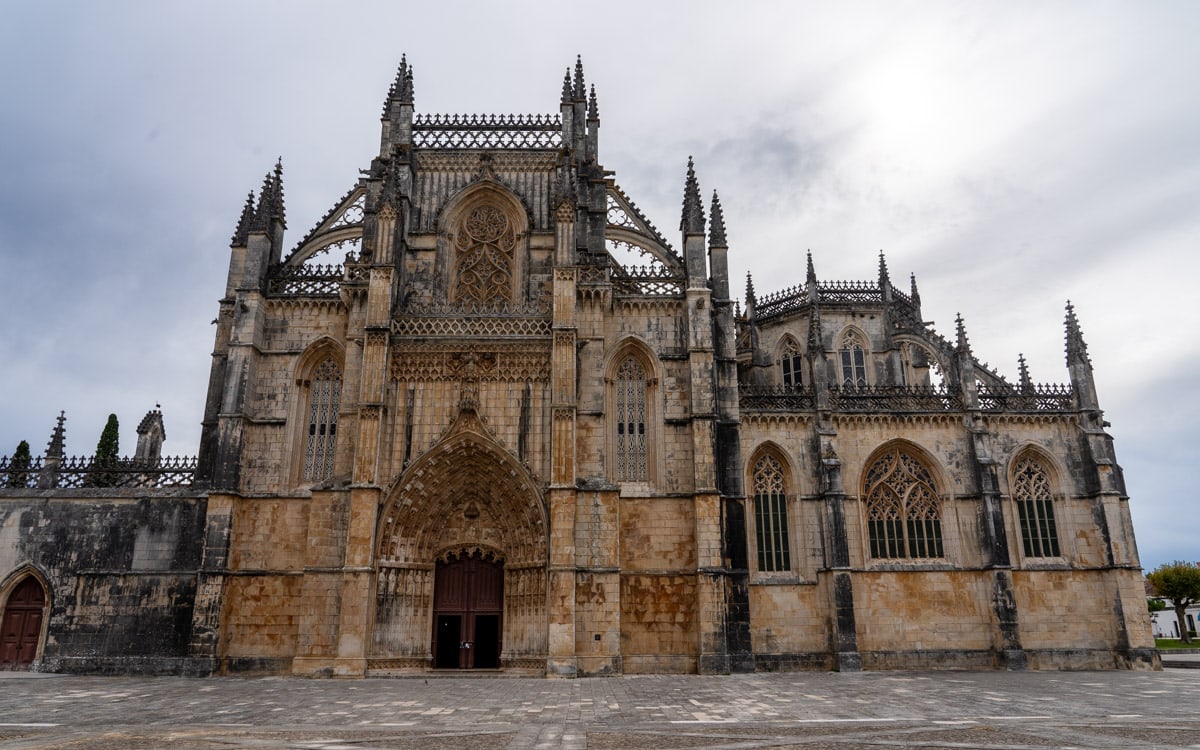
Batalha Monastery (Mosteiro da Batalha) is a Dominican convent located in the town of Batalha. Its official name is the Monastery of Saint Mary of the Victory (Mosteiro de Santa Maria da Vitória). The monastery, which celebrates a medieval battle, is considered to be one of Portugal’s finest architectural achievements. It is also a symbol of Portugal. On August 14, 1385, during the Battle of Aljubarrota, João I and his army defeated the Castilians. This victory preserved Portugal’s independence. Batalha in English means battle. In 1386, construction on the monastery began in order to thank the Virgin Mary for the Portuguese victory. It was not until 1517 that construction ended. Today, the exterior of the structure features a Flamboyant Gothic style with pinnacles, gargoyles, and stained-glass windows. The highlight is the Founder’s Chapel which holds the tombs of King João I, his wife, and their descendants. The monastery also features the Tomb of the Unknown Soldier, cloisters, and the impressive Unfinished Chapels.
Batalha Monastery (Mosteiro da Batalha)
Address: Largo Infante Dom Henrique, 2440-109 Batalha, Portugal
Hours: April-September: 9:00AM-6:00PM; October-March: 9:00AM-5:00PM; Closed on January 1st, Good Friday, Easter Sunday, May 1st, and December 25th
5 – Alcobaça Monastery (Mosteiro de Alcobaça)
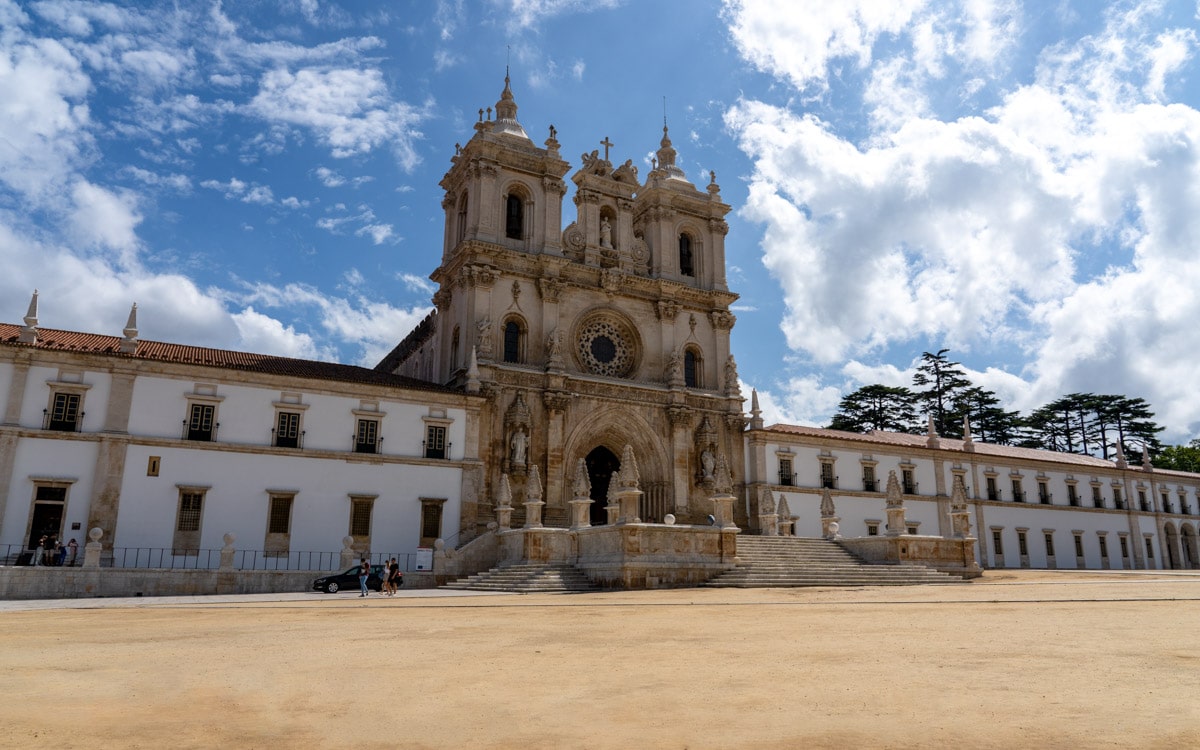
Alcobaça Monastery (Mosteiro de Alcobaça) is a Cistercian abbey church and monastery. The official name is the Monastery of Santa Maria (Mosteiro de Santa Maria). It is located 120 kilometers (75 miles) north of Lisbon in the town of Alcobaça. Afonso Henriques, the first king of Portugal, began construction on the monastery in 1178. Afonso used the monastery to assert his authority and power after reclaiming lands from the Moors. In 1228, the first Cistercian monks arrived. During the 13th century, the abbey was a center of culture and one of the most powerful abbeys of the Cistern Order. The interior is grand yet simple and bright with Gothic lines. The highlight of the church are the tombs of King Pedro I and his mistress, Inês de Castro. Their tombs face each other so that they will meet each other when they rise on Judgement Day. Pedro I, son of Afonso IV, was king of Portugal from 1357 to 1367. Other than a church, the Alcobaça Monastery features two cloisters, a refectory, kitchen, and a dormitory.
Alcobaça Monastery (Mosteiro de Alcobaça)
Address: 2460-018 Alcobaça, Portugal
Hours: Open daily 9:00AM-7:00PM
6 – Castle of Óbidos (Castelo de Óbidos)
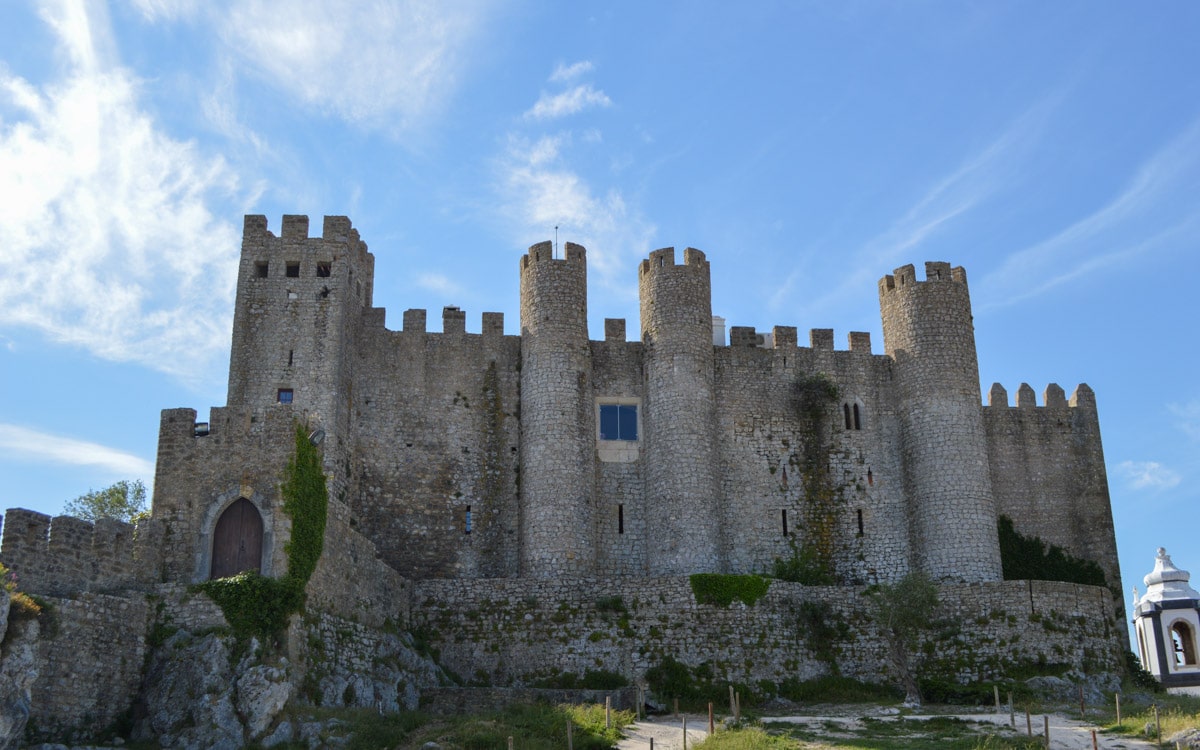
The Castle of Óbidos (Castelo de Óbidos) is a well-preserved medieval castle located in Óbidos. The town is one of Portugal’s most charming and touristy towns. While touristy, Óbidos is beautiful with whitewashed houses and cobbled alleys surrounded by medieval walls. One of the highlights of the town is the impressive Castle of Óbidos. Thanks to the Romans and Moors, a fortification of some type has existed at this location for almost 2,000 years. During the 12th century, the settlement and castle were overtaken from the Moors during the reigns of King Afonso I and King D. Sancho I. Over the next centuries, the castle was rebuilt, expanded, and reconstructed into what we see today. Today, the castle is a fancy hotel, or pousada, with nine rooms with grand views over the surrounding town.
Castle of Óbidos (Castelo de Óbidos)
Address: R. Josefa de Óbidos, 2510-001 Óbidos, Portugal
Hours: The exterior of the castle is accessible 24 hours a day
7 – Castle of Guimarães (Castelo de Guimarães)
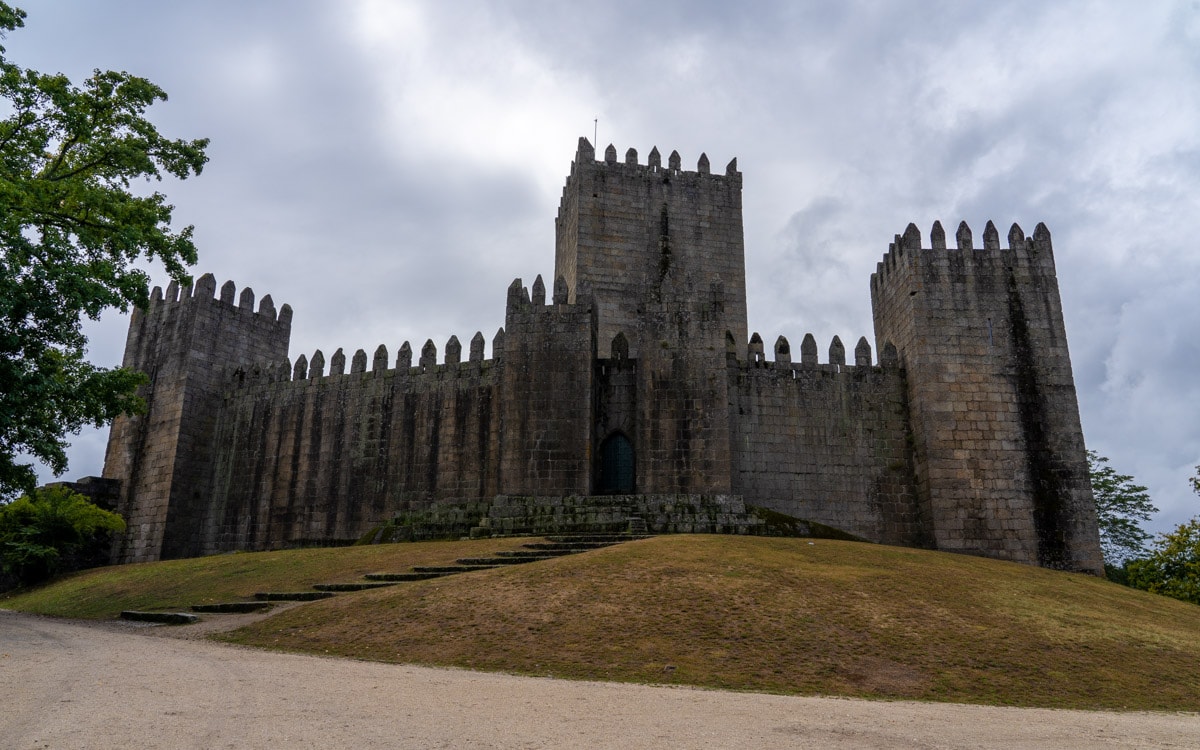
Castle of Guimarães (Castelo de Guimarães) is a medieval castle located in Guimarães. The city is located about 42 kilometers (26 miles) northeast of Porto. Guimarães is a walled city first settled in the 9th century. The city is often called the “birthplace of Portugal” as Afonso Henriques, the first king of Portugal, is believed to have been born here. Countess of Portugal Mumadona Dias ordered the construction of a castle and monastery in the 10th century. The purpose of the castle was to defend the monastery from attacks by the Moors and Norsemen. Over the centuries, the castle has been improved, remodeled, and expanded. Its present form, featuring Romanesque and Gothic architecture, dates back to the 13th and 14 centuries. Today, Castle of Guimarães features eight rectangular towers, a central keep, and a military square.
Castle of Guimarães (Castelo de Guimarães)
Address: R. Conde Dom Henrique, 4800-412 Guimarães, Portugal
Hours: Open daily 10:00AM-6:00PM; Last entry at 5:30pm; Closed on January 1st, Eastern Sunday, May 1st, December 25.
Map of the Seven Wonders Of Portugal
Last Updated on January 22, 2023
Related Posts